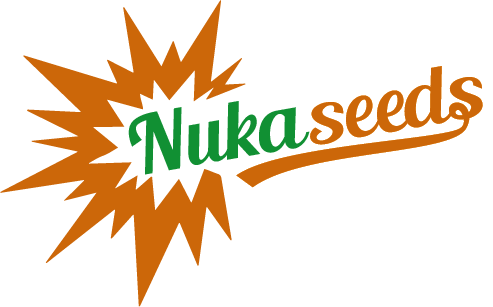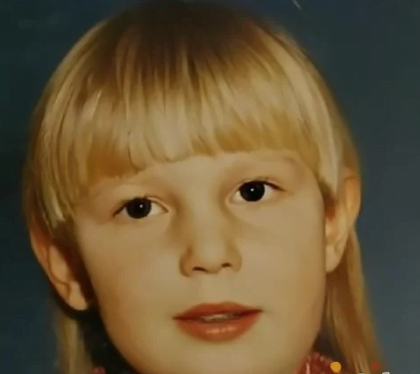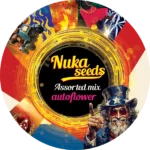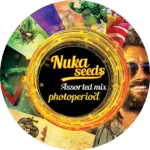English
Pruning is an activity that will not only improve your harvest, but also refresh the overall life cycle of your plants. You’ll learn a familiar routine that everyone who tends to plants knows.
You may find it strange that you are consciously cutting off parts of your plants. But you have to understand that those parts may not produce any usable buds. Most of the time, this is because they are not getting the light they need – they are shaded. Such parts then drain the power out of the plant that could be used to enpower usable buds.
Removing individual parts will allow your plant to redirect life force and nutrients to where you need them. Yellow or brown leaves need to be removed too, you can’t do much to help those. This pruning will also ensure a good supply of fresh air, so your plants will really thrive.
What parts of the cannabis plants will we prune?
Good quality buds grow in places where there is plenty of fresh air and sunlight, which tends to be near the top of the plant.
You should remove:
- The lowest branches that get almost no light.
- Leaves that are wilting or dying
- Low lying areas where flowers will grow. Also due to lack of light.
In the early stages of growth, the plant is straight and not so densely overgrown, so a daily dose of sunlight will be sufficient. Topping will then achieve that thickening, but we’ll get to that. Start pruning once it is more bulky.
So once the plant has thickened and resembles the shape of a bush, you will know where the cones are most likely to grow, so you can take off individual branches and leaves. This should be done before the flowering stage. Once you are in the flowering stage, do not prune again. The plant could revert to the vegetative stage, which could affect your yield.
The work on your cannabis plants
Take a pair of really good quality secateurs. For smaller plants and twigs, use small, standard shears or a razor. For large and thick branches, you may want to have a larger pair of scissors.
Your tools should always be carefully sharpened and clean. After all, you want your plants to be healthy and free of infection.
- First, separate the large branches. That way you make the most room for the more detailed work. Always start from the bottom.
- Cut the branches from the middle part. Over time, they will be overshadowed by the upper tiers and won’t produce as good quality flowers.
- Get rid of any leaves or twigs that are wilting and visibly not quite right.
A few days after pruning you will notice the first changes. The plant seems to wake up and growth gets going.
Always prune in one day, do not spread it over several days. When you have finished pruning on one plant, disinfect your tools.
Topping and fimming of cannabis plants
It is through these two trimming methods that your plant gets that bush-like shape. Overall, trimming is used to thicken cannabis plants and maximise your harvest.
Trimming is always done at the vegetative stage. This is how the hormones needed for growth are better redistributed. New shoots are formed.
Topping
It is a tried and tested method practiced by the vast majority of commercial growers. A lot of people trim the plant several times in this way to make the final texture more cohesive. Plants trimmed in this way have a strong branch structure and do not need as much support as ‘fimmed’ plants.
Fimming
FIM is basically a technique of deliberately imperfect topping. The plant needs more time to grow the cut branches, but the side and bottom branches grow even faster than with topping.
Topping and fimming belong to the group of methods using high stress levels for plants. So don’t cut your plants too often (more than once per a month) to avoid hermaphroditism. Keep an eye on the cuts until they look dry, for disease mould, and treat the cut immediately with an anti-mould spray if this problem appears.
The Procedure
- As with pruning, you need clean and sharp tools, preferably scissors. Ideally, you should make one clean cut. Make sure the tools are disinfected.
- Where to cut? Here’s the main difference between topping and fimming – location. With topping you cut one new whole shoot, but with fimming you cut the shoot in half. After topping, two new stems grow. After fimming, you can have 3-8.
- Monitor the results and see how the cannabis plants behave after your trimming. Where are the first shoots etc… After some time you can repeat the process.
So would you prefer topping because of the strong structure of the whole plant? Or perhaps fimming because of the large number of new stems, hence the possibility of a larger crop?
Pruning, and other trimming methods, directly allows you to control the flow of energy and nutrients in the plant structure. It gives you the opportunity to have a better view of the fruits of your labor and to keep an eye on the “health” of your crop as well. Not to mention that by checking frequently you can avoid fighting pests, nutritional deficiencies and soil problems. In short, it’s beneficial in every way.
But before you start to prune you need to grow your own cannabis plants. For this you need the best seeds and we have them ready for you.
Published by Jan Veselý
15/11/2021choose and buy cannabis seeds from our offer
our pleasure





























